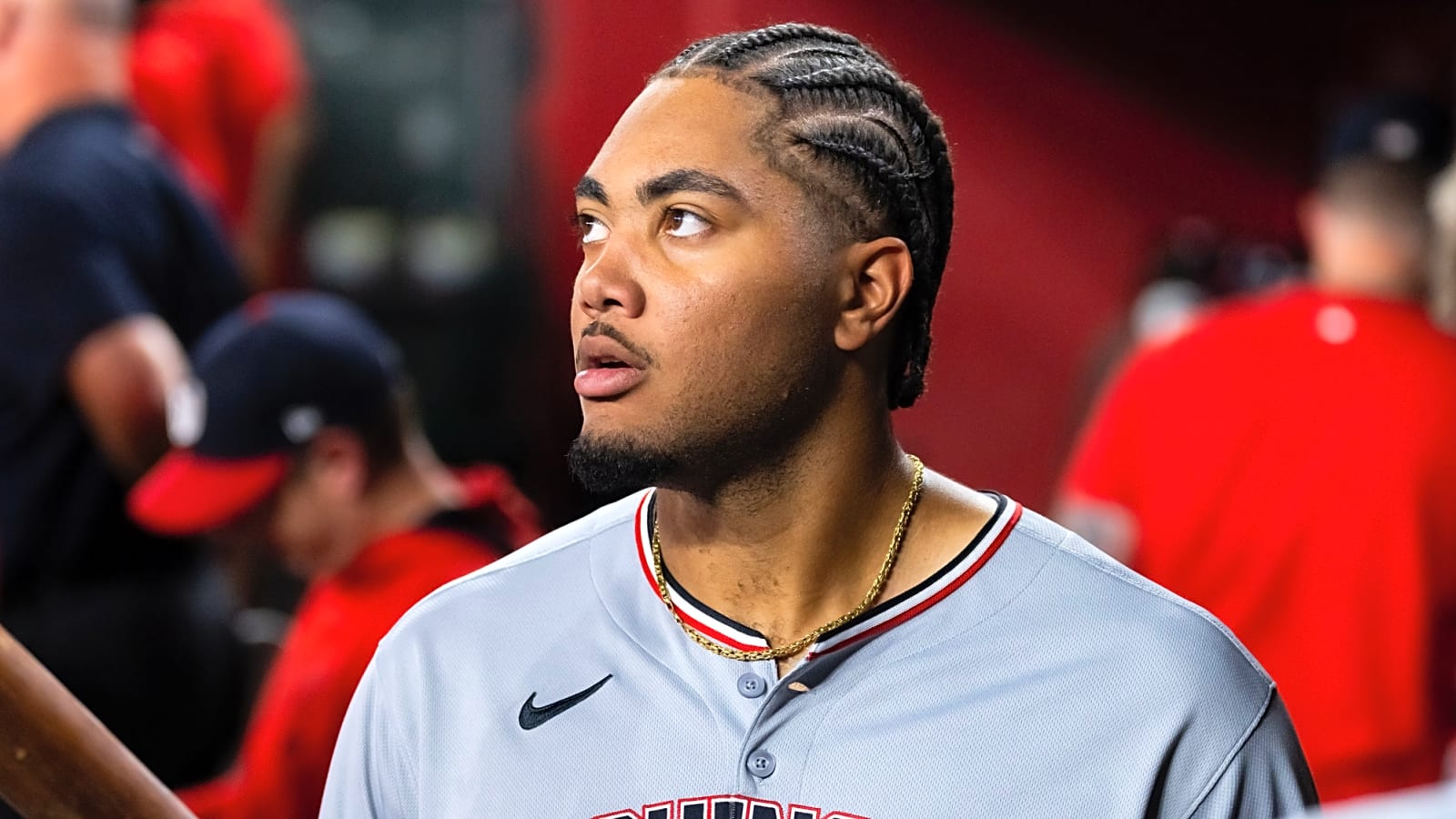
Stats were taken prior to play on June 2.
If I told you that a hitter owned a 27.5% strikeout rate, 51.6% ground-ball rate and 8.5% pulled air rate, what kind of hitter would you think they are?
Without any other context, those numbers might be enough to rule out the idea that this is an impact bat. At best, we’re probably talking about a league-average hitter.
Across MLB in 2025, ground balls have produced a .267 slugging percentage, nearly 130 points below the normal leaguewide slugging of .395.
Fly balls and pop ups hit to the opposite field or straightaway result in a .131 batting average and .330 slugging percentage.
And strikeouts, well, don’t produce anything productive outside of the occasional reach on a dropped third strike. It would make sense that any hitter with all of these perceived flaws in their game would have a hard time getting results.
James Wood, however, knows no such struggle.
JAMES WOOD MY GOODNESS
— Just Baseball (@JustBB_Media) May 31, 2025
4 HOMERS IN HIS LAST 6 GAMESpic.twitter.com/ilmegoVdzx
James Wood Is the Outlier
In Wood’s first full season in the big leagues, the 22-year-old is rapidly rising to superstardom in D.C.
He is slashing .286/.385/.567 for a .952 OPS, 163 wRC+ and 2.7 fWAR in 262 plate appearances. Among the 170 qualifying hitters, his wRC+ ranks ninth in the majors. He’s managed this despite having a strikeout rate that is higher than league average, a high ground-ball rate, and the 13th-lowest pulled air rate among qualifiers.
When those stats are stacked against a player, the margin for error in the rest of that player’s game is thin. There are several things that need to go exactly right if the player in question wants to see a wRC+ above 160.
Not only does Wood succeed at those things, he is among the very best in baseball.
An Elite Power Threat
Wood’s biggest strengths as a player were abundantly clear when he was in the minors and during his big-league stint in 2024; It was his power potential.
He’s wasted no time putting that on full-display with the Washington Nationals. His .281 ISO (slugging percentage minus batting average) ranks eighth highest among qualifiers, indicating a high propensity of extra-base hits.
His 15 doubles and 16 home runs make him one of the elite power bats in the game. But it’s not just the fact that he’s capable of driving the ball, it’s also how he’s doing it that makes this breakout so impressive.
At 94.0 mph, Wood’s average exit velocity ranks tied for 12th highest among qualifiers. He also ranks tied for seventh in barrel rate (19.0%) and fourth in hard-hit rate (58.2%). Those are all improvements over last year which were likely made possible by an increase of in average bat speed.
As if Wood didn’t already show loads of potential last year, he’s increased his average bat speed from 73.9 mph in 2024 to 75.8 mph in 2025. This has made Wood’s strength’s even stronger, and it’s elevated his game to this point.
Against All Odds
Although the increase in bat speed seems more like a bonus, it’s become an essential factor in Wood’s offensive explosion this year. As previously mentioned, Wood does not pull a lot of the balls he hits in the air. His 12.5% pull rate on fly balls is less than half the major league rate of 27.1%.
This is important because pulling fly balls is the easiest way to hit home runs. Fly balls that are pulled are 30% more likely to result in a home run compared to those hit straightaway or to the opposite field.
By hitting over 85% of his fly balls to these areas, he is making it more difficult to get results on these fly balls. And yet, he’s doing it anyway.
28.6% of fly balls hit straightaway and to the opposite field by Wood this year have resulted in home runs, the third-highest rate among the 142 hitters with at least 25 such batted balls. His barrel rate on these batted balls is 45.7%, the fourth highest on the same list.
Crushing the fly balls that he doesn’t pull is essential for Wood’s success. Without doing so, he would be hitting a lot of empty cans of corn to left and center field.
Wood’s 99.9 mph average exit velocity on fly balls and line drives, the fourth highest among qualifiers, is the difference between his 163 wRC+ and something much closer to league average.
What Is Wood’s Ceiling?
Amazingly enough, Wood still has a lot of room for growth.
Pulling a higher rate of his fly balls could further increase his home run total. Hitting fewer ground balls could afford him more opportunities for extra-base hits. And striking out less, although it could come at the expense of some of his power, can’t do much to hurt his overall numbers.
There’s no telling what Wood’s ceiling could be if he were to put these things together. Fixing one of these three flaws could turn him into an immediate MVP candidate in the National League. Fixing two of them could make him one of the best hitters in the game. And although fixing all three would probably be too much to ask, it could make him one of the great bats of this generation.
Is it an unfair expectation to set? Perhaps. But for now, at age 23, Wood has already shown an incredible amount of promise to be a cornerstone bat in Washington for years to come.
More must-reads:
- Jorge Polanco signing shows New York Mets' desperation
- Yankees set a condition to re-sign Cody Bellinger
- The 'AL and NL MVPs since 2000' quiz
Breaking News
Trending News
Customize Your Newsletter
 +
+
Get the latest news and rumors, customized to your favorite sports and teams. Emailed daily. Always free!








